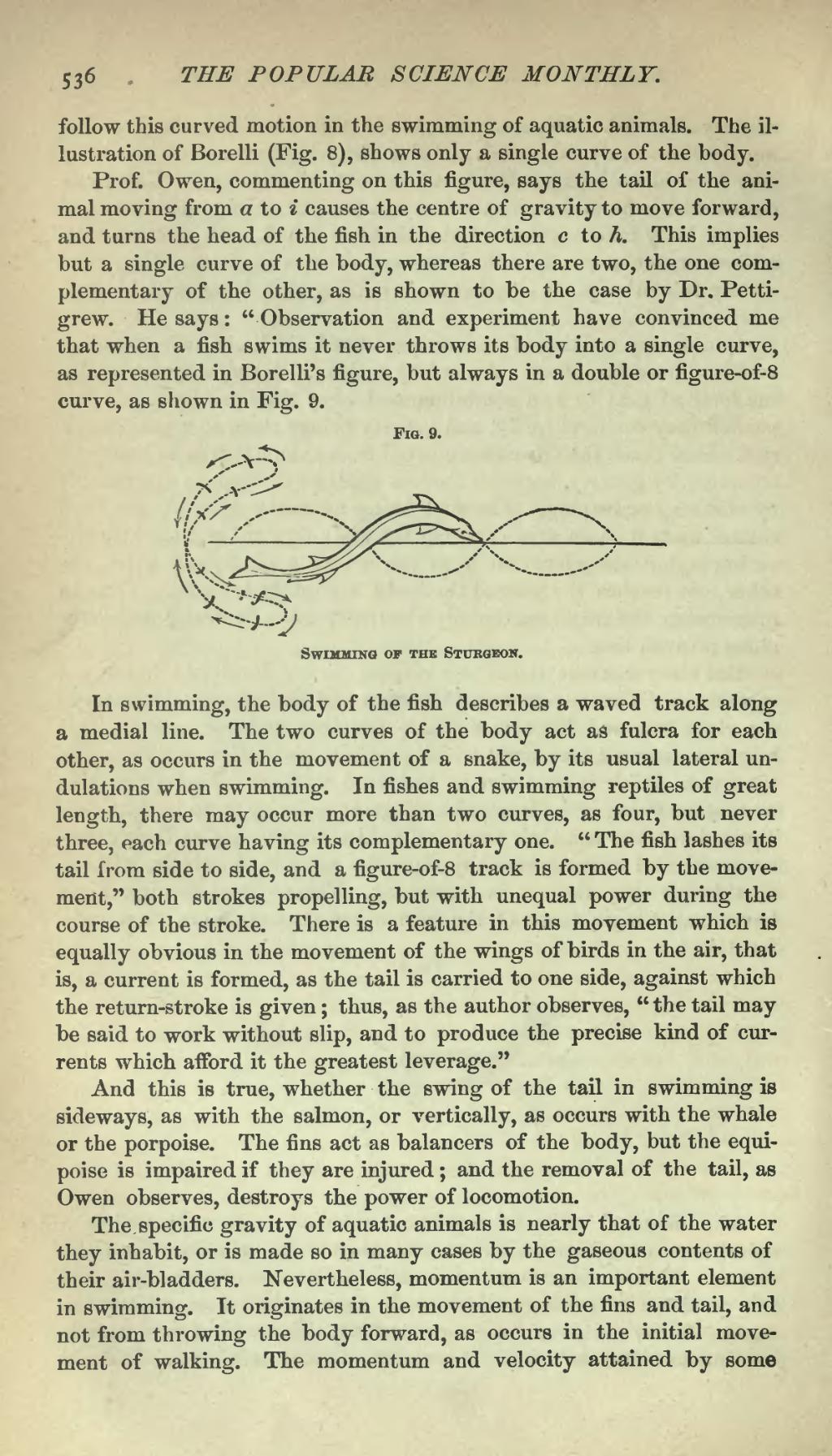follow this curved motion in the swimming of aquatic animals. The illustration of Borelli (Fig. 8), shows only a single curve of the body.
Prof. Owen, commenting on this figure, says the tail of the animal moving from a to i causes the centre of gravity to move forward, and turns the head of the fish in the direction c to h. This implies but a single curve of the body, whereas there are two, the one complementary of the other, as is shown to be the case by Dr. Pettigrew. He says: "Observation and experiment have convinced me that when a fish swims it never throws its body into a single curve, as represented in Borelli's figure, but always in a double or figure-of-8 curve, as shown in Fig. 9.
Fig. 9.

Swimming of the Sturgeon.
In swimming, the body of the fish describes a waved track along a medial line. The two curves of the body act as fulcra for each other, as occurs in the movement of a snake, by its usual lateral undulations when swimming. In fishes and swimming reptiles of great length, there may occur more than two curves, as four, but never three, each curve having its complementary one. "The fish lashes its tail from side to side, and a figure-of-8 track is formed by the movement," both strokes propelling, but with unequal power during the course of the stroke. There is a feature in this movement which is equally obvious in the movement of the wings of birds in the air, that is, a current is formed, as the tail is carried to one side, against which the return-stroke is given; thus, as the author observes, "the tail may be said to work without slip, and to produce the precise kind of currents which afford it the greatest leverage."
And this is true, whether the swing of the tail in swimming is sideways, as with the salmon, or vertically, as occurs with the whale or the porpoise. The fins act as balancers of the body, but the equipoise is impaired if they are injured; and the removal of the tail, as Owen observes, destroys the power of locomotion.
The specific gravity of aquatic animals is nearly that of the water they inhabit, or is made so in many cases by the gaseous contents of their air-bladders. Nevertheless, momentum is an important element in swimming. It originates in the movement of the fins and tail, and not from throwing the body forward, as occurs in the initial movement of walking. The momentum and velocity attained by some
